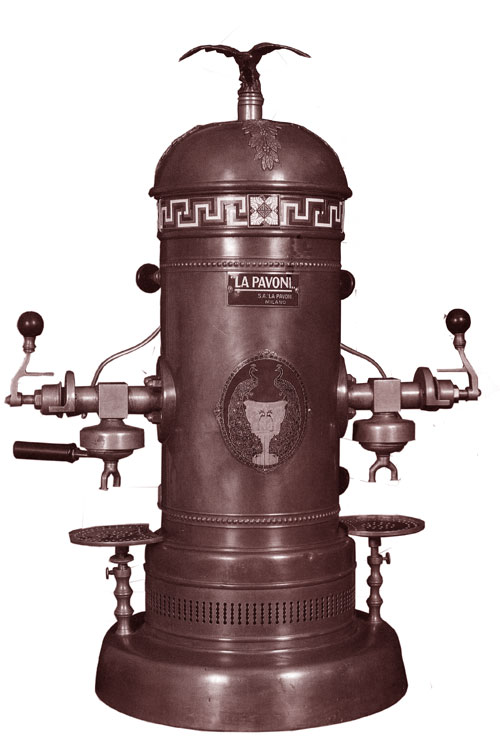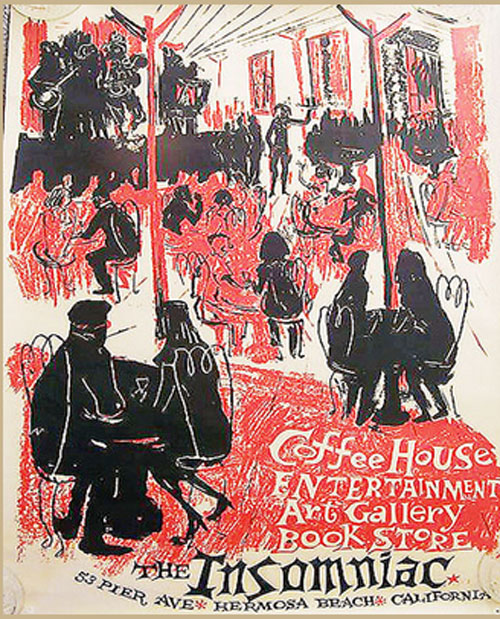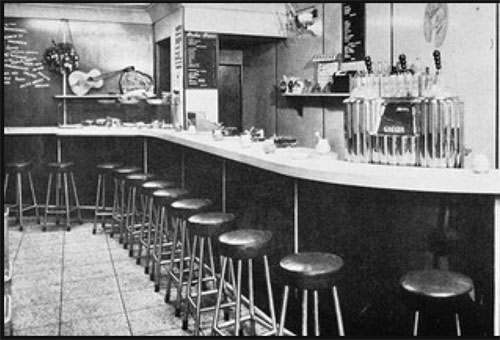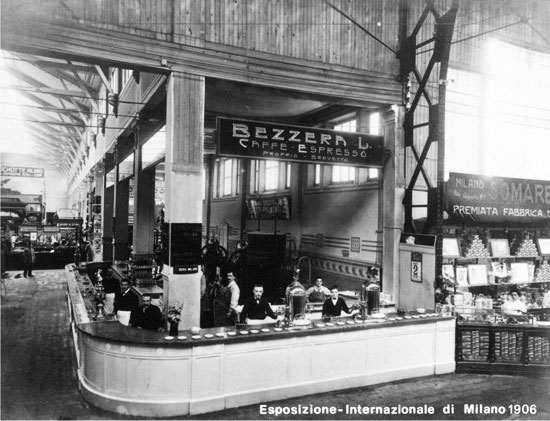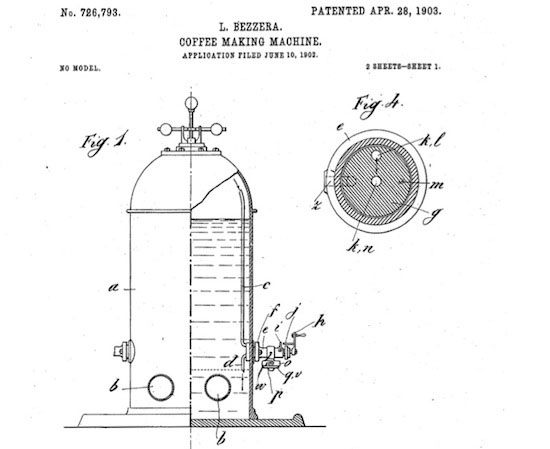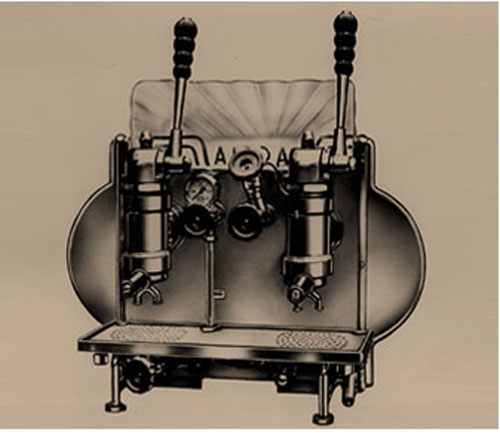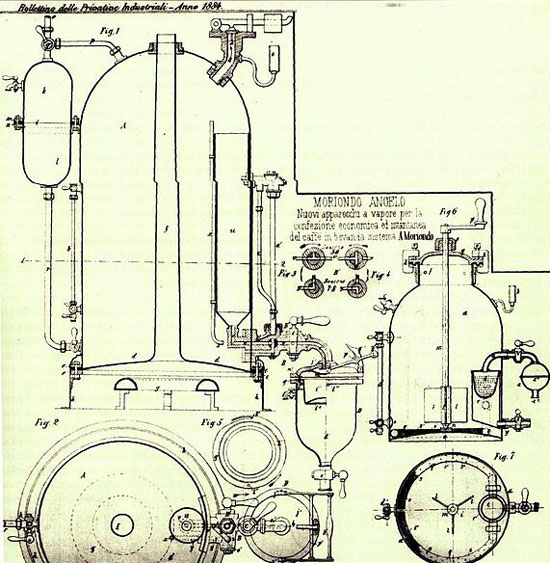RESOURCES
Chapter Notes
Chapter 22: Espresso!
The espresso machine was almost as much a symbol of the age as the brew it created. Able to provide hundreds of cups of powerfully aromatic coffee every hour, it gave instant gratification while extracting an essence that had rarely been savoured before. It was new, it was beautiful, it was chic and exciting.
By the end of World War II, Italian communities in cities like San Francisco, New York, London and Melbourne had re-established links that had been closed off during the conflict. Within a few short years, the war (with Italy, at least) had been forgotten and people whose lives had been put on hold for the duration, if not shattered by the brutalities of battle, rushed to rekindle dreams that had been temporarily forgotten. Artists, writers, painters, poets were energised to make the world anew. It was a time of flowering, a time to let loose after so many years of misery and hardship.
One of the earliest Italian espresso machines on display at the International Exposition in Milan, 1908
Though the Italian espresso revolution was a post-war phenomenon, the machine itself wasn't new. Prototypes had been constructed much earlier in the century. What was new, however, was the technology which allowed for a more efficient system of pressurised extraction without scalding the coffee and embittering the brew.
The creation of Signor Gaggia was a process which circumvented this problem by using steam to force a separate flow of properly heated water through the grounds under extreme pressure whereby a unique essence was discovered, a special extract which came to be known as 'la crema', coveted by Italian connoisseurs and ignored by most British and American coffee drinkers for whom the finer details of a coffee extraction was hardly what they were after.
|
